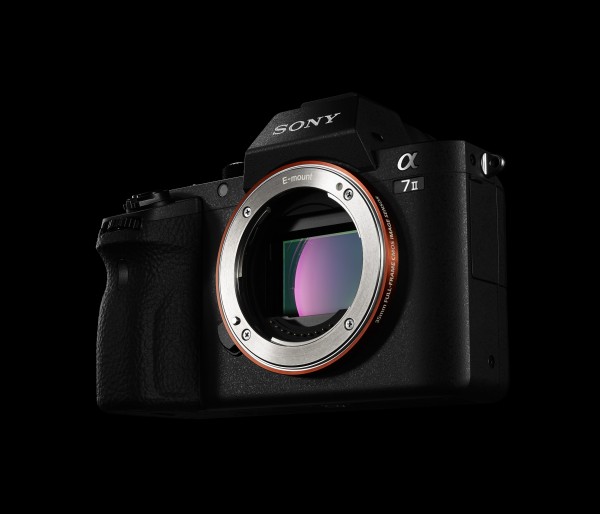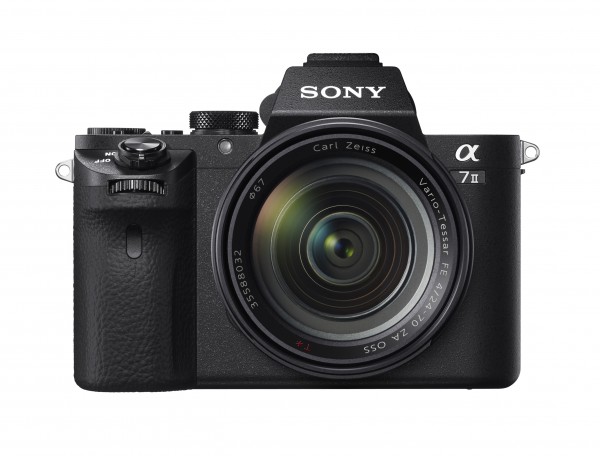Just when you think the year would end without another new mirrorless camera, Sony’s Alpha 7ii decides to turn up in time for Christmas in Singapore. As its name indicates, this is the second iteration of the hugely popular Alpha 7 that was just launched a little over a year ago.
So what’s changed? Physically, the Alpha 7ii now comes in a beefier body, though the overall dimensions are not that far from the original. So, those who love the Alpha 7’s size will like the new model.
In terms of ergonomics, the Alpha 7ii provides a better shooting grip compared to its predecessor. The bulkier body, a thicker grip and the re-positioned shutter button all improve the new camera’s handling.

The main reason for the thicker body is the inclusion of the very first 5-axis image stabilisation system inside a full-frame camera. The Alpha 7ii joins Olympus as one of a few companies to offer internal stabilisation within the camera body.
There are clear benefits. Key among them is the ability to stabilise all types of lens from the FE-Mount lens and adapted lenses from other brands that have a physical lever to manipulate the aperture.
At Singapore’s launch event at Gardens by the Bay last week, I managed to test the new camera using an adapted A-mount 100mm, f2.8 Macro lens for portraiture and macro shots inside the flower dome.
The first few test shots in what I believe was default mode seemed to be a bit cooler than normal. The skin tone was bordering on being whitish-blue. With Auto White Balanced switched on, I changed the colour profile management from neutral to vivid and the photos immediately improved. They popped to life.




Would this be a worthy upgrade from the Alpha 7? From the images that I have seen here, there isn’t much improvement in terms of sensor quality. Not surprising, since the Alpha 7ii uses the same Exmor 24.3-MegaPixel sensor and the Bionz X image processor.
In any case, the excellent image quality from the Alpha 7 would be sufficient for most uses. Only if you are really into macro photography and like to shoot in light-starved conditions would the inclusion of the 5-axis stabilisation be a practical addition.
All things considered, having better high-ISO performance like on the Alpha 7s and matching the camera with a faster f2.8 lenses would be a more pragmatic purchase.
That said, the Achilles heel of the Alpha 7 system is the lack of excellent and affordable native FE mount lenses. Out of the seven native lenses, more than half are the more expensive Zeiss lenses. The only lens that has native support and is for general usage is the FE 28-70mm f3.5-5.6 OSS lens, which comes as a kit with the new camera at S$2,549.
If you already have lenses from Sony, then getting the body alone at S$2,149 and the LA-EA4 adapter to work with a full-frame A-Mount lens or to use with your old NEX E-Mount lens but can only capture images with the resolution of 10-MegaPixels.
You could argue that the usefulness of the Alpha 7 system could be expanded with the use of adapters but even then, the argument is not bulletproof. If you plug in a Leica lens via an adapter, you lose the auto-focusing, which many people use.
And if you plug in an A-Mount full-frame lens from Sony’s digital SLR range, don’t forget the adapter will cost you extra.
Plus, having an additional node in the system only means more latency so adapters do slow down the system. This is critical when shooting fast-moving subjects during sporting events, for example.
The Alpha 7ii is a souped-up version, alright. But if Sony could spend more effort to beef up its FE lens offering rather than come up with an upgrade so soon, it would enhance the offering as a whole and make the Alpha 7 mirrorless system a viable one to get into.








You would not need the LA-Ea3 adapter with “NEX E-mount” lenses. E-mount lenses not designed for the full frame sensor can be used with the a7 in crop mode. The difference between the ea3 and ea4 adapters is in AF support, autofocus speed and cost (the la-ea4 has more of each). https://us.en.kb.sony.com/app/answers/detail/a_id/37304/~/what-is-the-difference-between-the-la-ea1,-la-ea2,-la-ea3,-and-la-ea4-lens